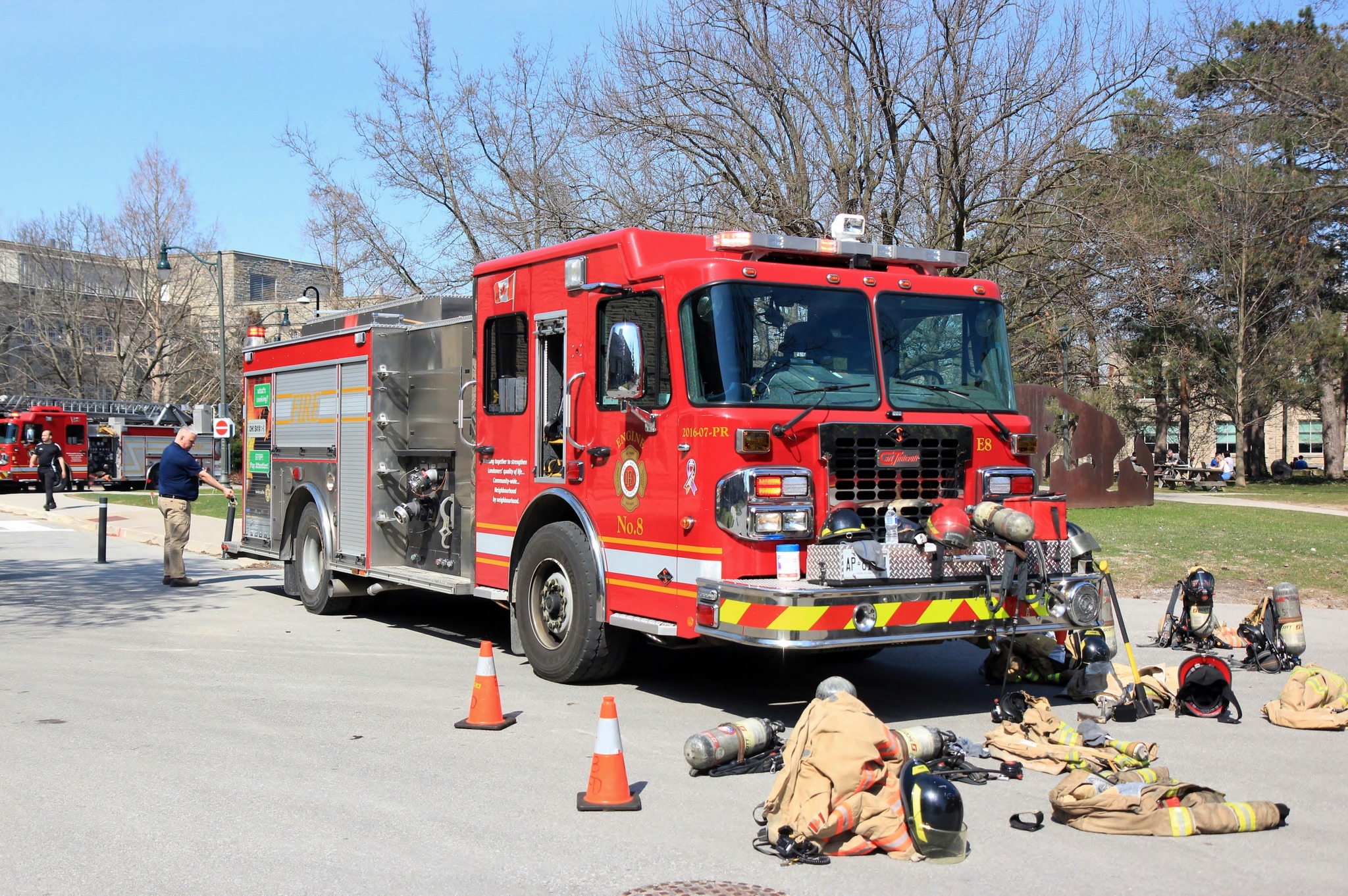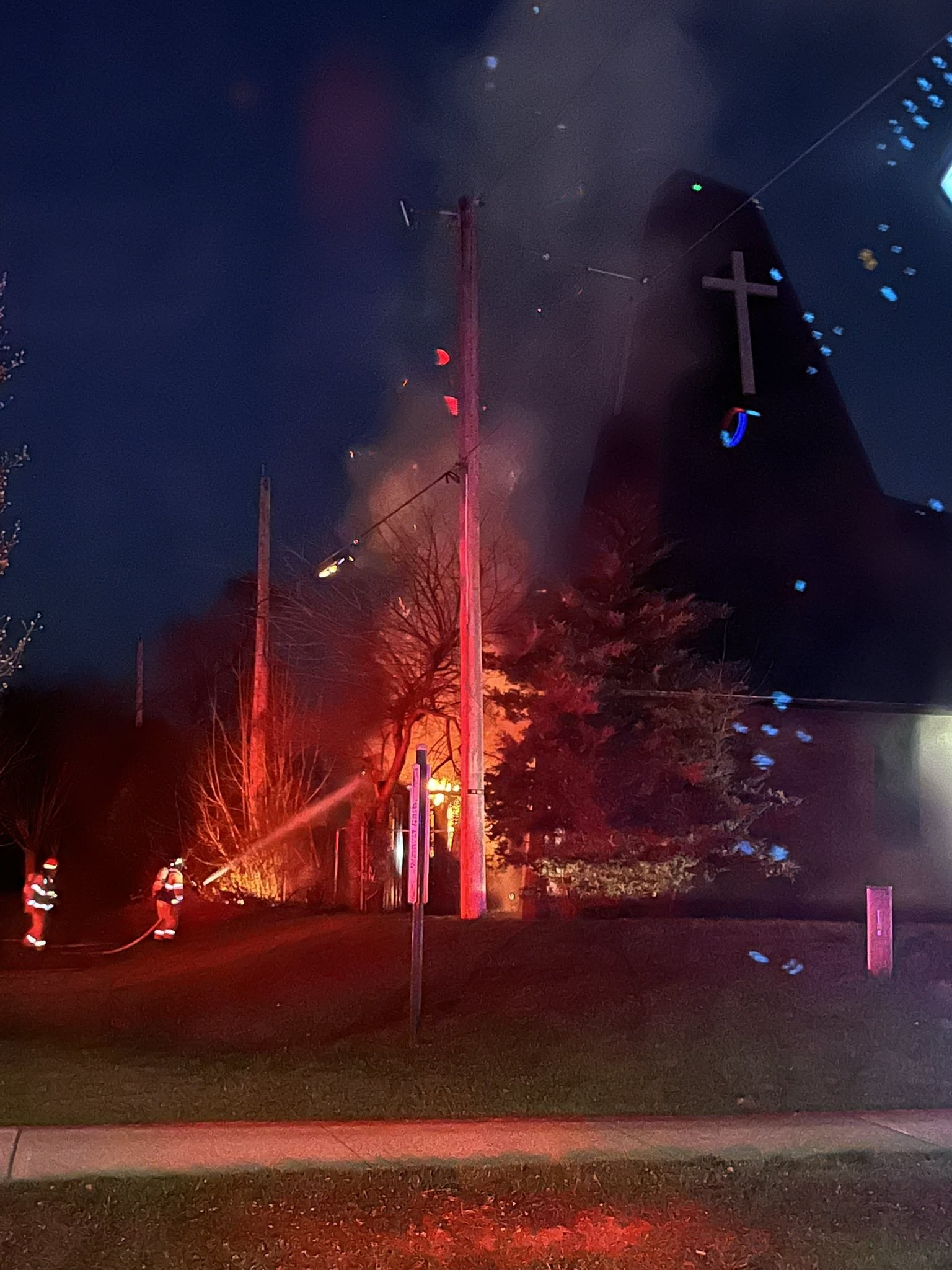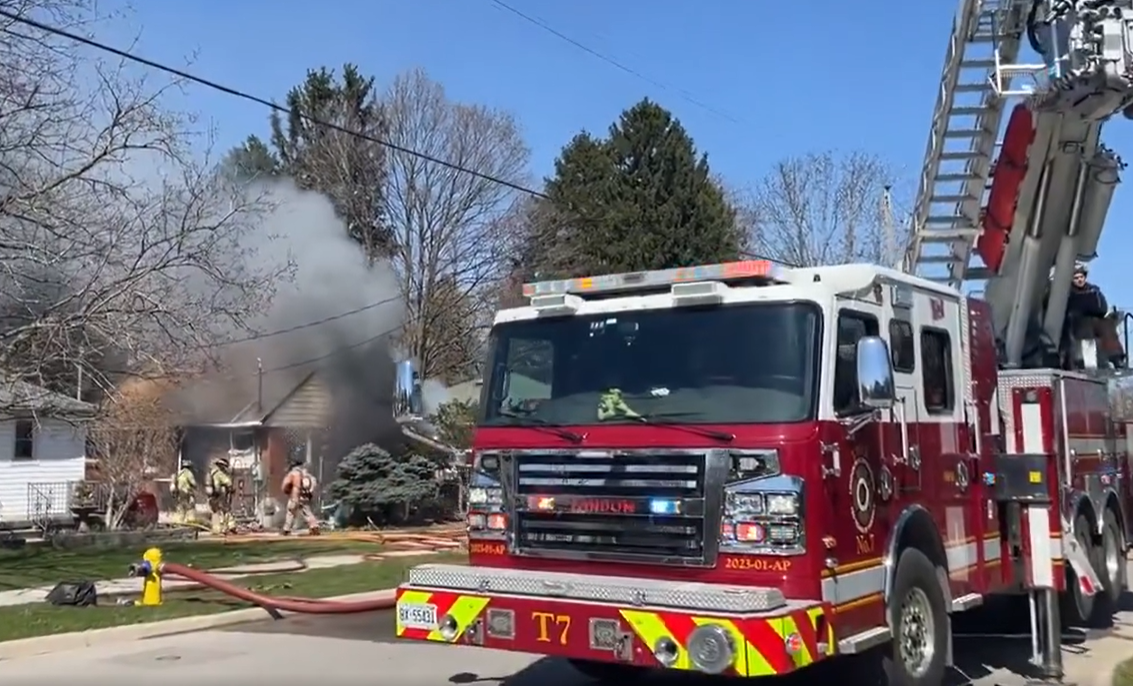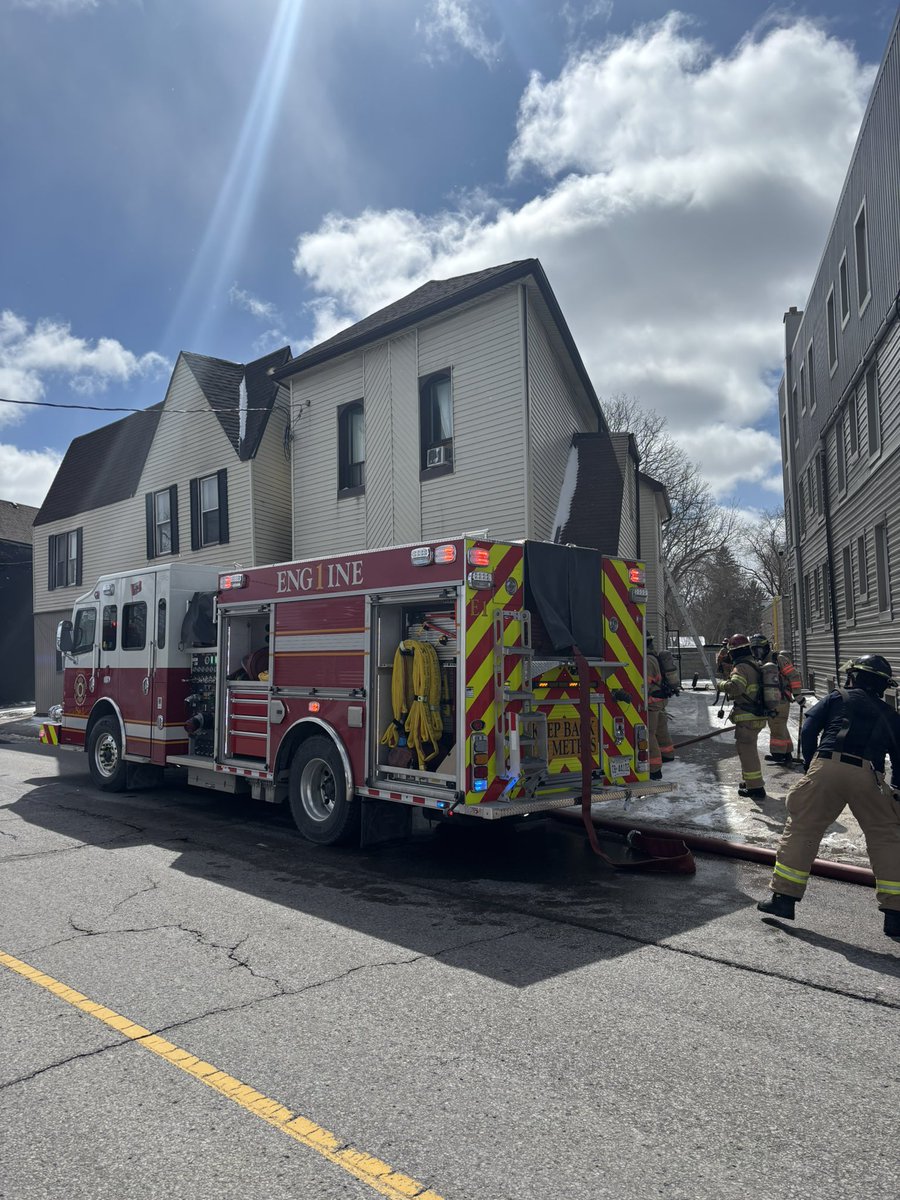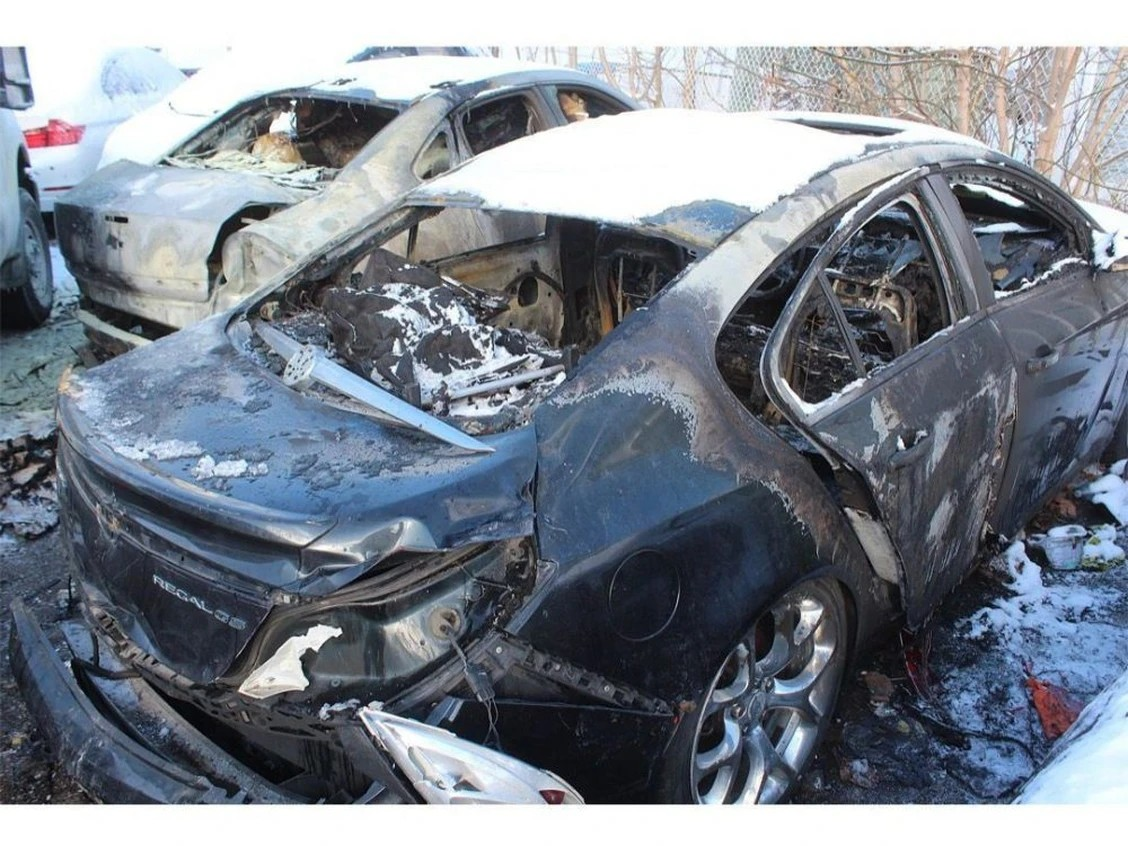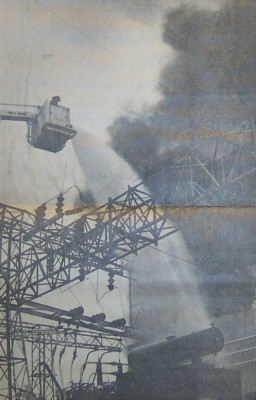
Firefighters douse the transformer fire which cut electricity power for more than 10 hours Thursday in downtown London. They poured thousands of gallons of water on the flaming transformer from their snorkel unit. The burned transformer, foreground, must be replaced. Power was off in the core area from 10:29 a.m. to 8:37 p.m.
An explosion and fire in a key transformer station crippled downtown London Thursday, causing loss of business, disruption and inconvenience.
Power was restored to part of the core area at 8:37 p.m., after a 10-hour-and-eight-minute interruption. The area first brought back into service was the York-Dufferin-Ridout-Colborne district.
Officials said there was no hope the remainder of the blacked-out area would get power until at least noon today.
No one was injured as a transformer at the Nelson Street station near Maitland Street malfunctioned about 10:20 a.m., and caught fire. One transformer was destroyed and will be replaced.
Downtown clocks stopped at 10:29 a.m.
Victoria and St. Joseph’s hospitals, two of London’s four hospitals, were able to carry on under emergency power.
At St. Joseph’s, some operations were completed by flashlight when the auxiliary power system stopped for about 10 minutes.
An emergency bypass line was fed to Victoria Hospital, bringing electricity back into service at 5:45 p.m., and a similar bypass restored power at St. Joseph’s at 7:23 p.m.
Victoria executive director Rod Thorfinnson said about 10 or 11 operations – “a full slate” – were in progress but surgeons experienced no problems because emergency power cut in immediately.
But at St. Joseph’s, the auxiliary power switched on for about one minute before failing, leaving the hospital without power for about 10 minutes. Cause of the failure is no known.
A hospital official said no patient suffered ill effects because of it.
One doctor said he was able to complete an operation he had started when the reserve power was restored – with no ill effects to the patient.
A total of three operations were under way at S. Joseph’s. All were completed successfully.
“It was kind of dark in there for a while. That’s the trouble when there are no windows in the operating room,” he said.
Other equipment was juggled around but the hospital was carrying on with its diesel-powered auxiliary system.
Thames Valley Ambulance diverted all hospital calls to University Hospital, which was not affected.
London was hit by two blackouts in the downtown area last year.
One, which snarled evening rush-hour traffic, left the CN tower on York Street without power for five days. An underground electrical fire in cables servicing the tower triggered a series of explosions and popping manhole covers in April.
Power in the downtown area was out for an hour and 40 minutes at that time.
In October, fire in an underground transformer at King and Richmond streets caused a mid-afternoon 45-minute power break.
Electrical office equipment ceased to work in buildings without emergency power and downtown buildings began to get hot and stuffy as air conditioners quit.
For some workers, it was an unexpected break as employers released them for the day. For others, it was added work, coping with minor emergencies and making plans to carry on if the blackout became more extensive.
Mel Price, a spokesman for London Life which employs 1,900 at its downtown office said the power failure brought everything to a standstill.
The London board of education staff was sent home between 11 a.m. and 2 p.m.
The blackout covered the entire central core of the city, including 10,000 homes bordered by the Thames River on the south and west to Cheapside Street in the north and between Egerton and Quebec streets in the east. Some sections on the edges of the boundaries did have power, however.
Initially, citizens manned intersections, directing traffic until police arrived.
At the corner of Dundas and Wellington streets in the heart of downtown, 26-year-old Bob McNaughton, a counsellor with the YM-YWCA, directed traffic until a policeman arrived.
“I couldn’t do much in the dark, so I thought I’d help out,” he said, blowing the whistle he brought with him from the nearby “Y” building.
Motorists paused to wave and say “keep up the good work.”
Bob Stiles, accounting officer with the Toronto Dominion Bank at Dundas and Wellington streets, said the bank alarm system was working during the blackout and three phones were in operation.
He said there was no problem with security. “There’s a policeman standing right out there too,” he said pointing to the intersection where an officer was directing traffic.
Manager of ADT protective systems Gord Brown, whos company handles burglar alarms for the majority of financial institutions, jewelery stores and furriers, said emergency power for the systems was supplied to all customers from headquarters on York Street.
“Our main problem is getting out customers not to return to their premises after they lock up,” Mr. Brown said as the businesses began closing. “We don’t want to give police any false alarms.”
When the seriousness of the backout was realized by city plice, all available officers working at desks jobs at police station were ordered for traffic duty.
City detectives took over patrol duties from uniformed officers.
Superintendent Fred Bruce said, at one stage, 40 uniformed officers were directing traffic at key intersections normally controlled by traffic lights.
Supt. Bruce said the civilians directing traffic were doing “a fine job, some with expertise”. City crews erected temporary stop signs to aid in traffic control.
When the station was hit by fire, the emergency lighting power system at the police station was activated, averting communications problems.
While policemen were pressed into street duty outside, the courthouse was shut down shortly before 11:30 a.m. and cleared because a building up of cigarette smoke with the ventilation system was not working.

